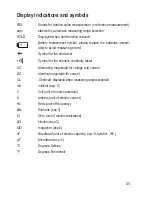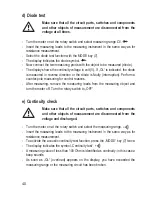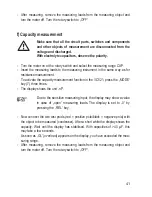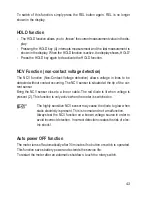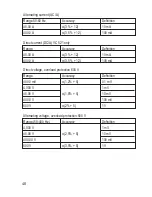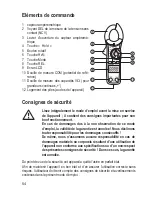
- Now connect the two measuring prods to the object to be measured (generator,
switching etc.).
- The measuring value is indicated on the display
- After measuring, remove the measuring leads from the measuring object and
turn the meter off. Turn the rotary switch to „OFF“.
c) Resistance measurement
Make sure that all the circuit parts, switches and components
and other objects of measurement are disconnected from the
voltage at all times.
Proceed as follows to measure resistances:
- Turn the meter on at the rotary switch and select measuring range „Ω“.
- Plug the red measuring lead into the Ω-measuring socket (11) and the black
measuring lead into the COM measuring socket (10).
- Check the measuring leads for continuity by connecting both measuring prods to
one another. After that the resistance value must be approximately 0.5 Ohm
(inherent resistance of the measuring leads).
- Press the button „REL“ (8) to not let the inherent resistance of the measuring leads
to affect the following resistance measuring. The display shows 0 Ohm
- Now connect the measuring prods to the object to be measured. As long as the
object to be measured is not high-resistive or interrupted, the measured value
will be indicated on the display. Wait until the display has stabilised. With resis-
tances of >1 MΩ , this may take a few seconds.
- As soon as „OL“ (overload) appears on the display, you have exceeded the
measuring range or the measuring circuit has been broken.
- After measuring, remove the measuring leads from the measuring object and
turn the meter off. Turn the rotary switch to „OFF“.
☞
If you carry out a resistance measurement, make sure that the mea-
suring points which you contact with the test prods are free from dirt,
oil, solderable lacquer or the like. An incorrect measurement may
result under such circumstances.
39
Summary of Contents for AC Mini VC-520
Page 99: ...99...











